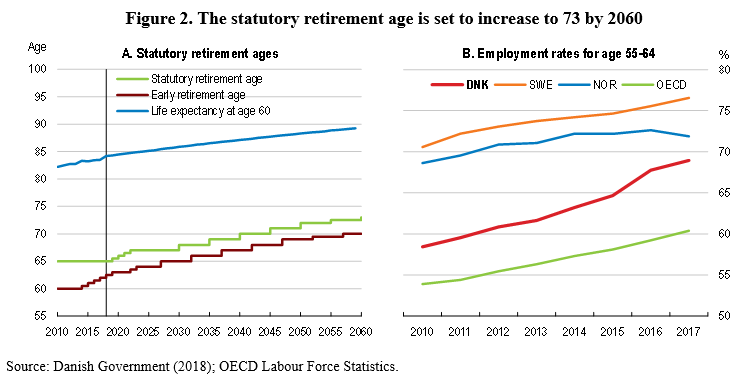Denmark’s Retirement Age Increase: A New Era for Pensioners

Introduction
The retirement age in Denmark is set for an increase as part of a governmental strategy to ensure the sustainability of the country’s welfare system. This change is significant as it reflects the growing demographic challenges and the need for economic adjustment in response to an ageing population. With life expectancy rising, Denmark is facing the pressing need to reform its pension system to maintain financial viability.
Details of the Increase
As it stands, the Danish retirement age is currently 67 years, with plans to gradually raise it to 68 by 2025 and potentially higher in the following decades based on life expectancy trends. The Danish government, led by Prime Minister Mette Frederiksen, has indicated that this is a necessary step to secure the long-term health of the pension scheme, with estimates suggesting that by 2025, the population over 65 will increase by 150,000, further straining the welfare system.
The Rationale Behind the Change
One of the major drivers for this policy shift is the need to align the retirement age with the increasing life expectancy of Danes, which currently stands at approximately 81 years. Similar changes have already been observed in other European countries, as the ratio of workers to retirees has shifted dramatically. The anticipated increase is also designed to strengthen the labour market by encouraging older individuals to remain economically active for a longer period.
Public Reaction
While some citizens welcome the reforms for their logical approach to sustainability, others express concern about the implications for those in physically demanding jobs who may struggle to work longer. The Danish Council of Ethics has been engaged in discussions around equity and fairness, particularly regarding how these changes will affect different groups within society.
Consequences and Forecasts
Looking forward, the increase in the retirement age is likely to lead to a more diversified economy, as older citizens will continue to contribute to the workforce. However, this transition may require additional measures, such as tailored support for those who find it challenging to remain employed due to the nature of their work. Analysts suggest that the government will need to provide additional training and support systems to help older workers integrate into different roles as they age.
Conclusion
The increase of the retirement age in Denmark signifies a necessary adaptation to demographic changes and economic realities. As the government embarks on these reforms, it remains to be seen how the combination of public policy and individual adaptation will shape the future landscape of retirement in Denmark. The implications extend beyond the current workforce, affecting future generations and the overall structure of the welfare system.








